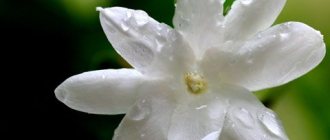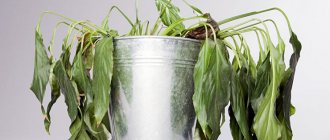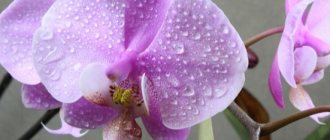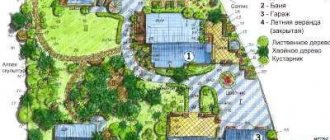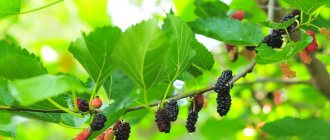Author: Elena N. https://floristics.info/ru/index.php?option=com_contact&view=contact&id=19 Category: Fruit and berry plants Published: July 02, 2015Last edits: November 03, 2020
- Growing in the garden
- Pests and their control
- Beneficial features
plant (lat. Vaccinium uliginosum) , or swamp blueberry , or swamp blueberry , or low-growing blueberry, is a type species of the genus Vaccinium of the Heather family. This deciduous shrub is found in temperate and cold regions of the entire Northern Hemisphere - in Eurasia, the species' range begins in Iceland and reaches the Mediterranean and Mongolia, in North America it extends from Alaska to California. Among the people, blueberries have many names - drunkard (drunk berry, drunkard, drunkard), gonobobel (gonoboy, gonobol, gonobob), cabbage roll (blueberry), durnika (fool, fool, fool), blue grapes, blueberry. All names with negative connotations were given to blueberries by mistake: people complained that they gave them headaches (pain drives into the head, like a hangover - hence gonobol, fool, drunkard, etc.), and the culprit of headaches is actually the invariably growing next to blueberries is wild rosemary. The blueberry itself is a valuable natural product that is increasingly attracting the attention of gardeners. In addition to the common blueberry, which grows everywhere in regions with cool and temperate climates, there is such a species as the highbush garden blueberry (Vaccinium corymbosum) - an American relative of the common blueberry, which has long become a full-fledged garden crop in its homeland. In Canada and the USA, this tasty and healthy berry is much more popular than black currant. Varieties and hybrids of garden blueberries, bred by American and Canadian breeders, are gradually gaining popularity among our gardening enthusiasts, and now Canadian blueberries in the garden of the middle zone or hybrid American blueberries in the countryside somewhere in the southern regions of Russia and Ukraine are not such a rarity.
Planting and caring for blueberries
- Planting: possible in the spring, before the buds swell, but better in the fall, during leaf fall.
- Lighting: bright sunlight.
- Soil: rested and restored over several years under fallow, well-drained, peaty-sandy or peaty-loamy, with a pH value of 3.5-4.5 pH.
- Watering: in the mornings and evenings twice a week, using at least a bucket of water for each adult bush. That is, you should pour a bucket of water under each bush twice a week, morning and evening. On the hottest days, blueberries are not only watered, but also sprayed early in the morning or after 17.00.
- Pruning: in spring, before buds swell.
- Fertilizing: only with mineral fertilizers at the very beginning of the growing season.
- Reproduction: seeds, cuttings and dividing the bush.
- Pests: May beetles, beetles, silkworm caterpillars, scale insects, aphids, leaf rollers.
- Diseases: gray rot, moniliosis of fruits, physalsporosis, septoria, phomopsis, double spot, stem cancer, dwarfism, red ring and necrotic spots, filamentous branches, viral mosaic.
Read more about growing blueberries below.
From the history of highbush blueberry variety formation
North America is considered the birthplace of wild blueberries. The varietal crop appeared at the beginning of the last century in the USA. In 1906, a team of scientists led by biologist Coville developed the first varieties Brooks and Russell from wild blueberry varieties. And by 1937, biologists had already created 15 varieties.
The wave of interest in blueberries gradually spread to other countries. In 1926, Canada took over the variety testing baton. The history of the experimental introduction of highbush blueberries in our country began in 1964.
Garden blueberries - description
Scientists include lingonberries, cranberries, blueberries and blueberries in the genus Vaccinium, with which some botanists identify blueberries, although this does not seem fair to all specialists. The root system of blueberries is fibrous, without root hairs, the branches are erect, cylindrical, covered with dark gray or brown bark, the shoots are green. The common blueberry bush reaches a height of only one meter; the highbush blueberry species grows to a height of two or more meters. Small, hard, whole smooth blueberry leaves up to three centimeters in length and up to two and a half in width grow in regular order on short petioles. They have an obovate or lanceolate shape with a blunt apex and slightly downward-curved edges, the upper side of the leaf blade is bluish-green due to a waxy coating, the lower side has strongly protruding veins of a lighter shade.
Small drooping five-toothed flowers with a pinkish or white pitcher-shaped corolla up to 6 cm long and 8-10 stamens sit several at a time on the tops of last year’s branches. Blueberry berries are oblong, up to 12 mm long and weighing up to one gram, blue with a bluish bloom, thin-skinned, with greenish pulp. American highbush blueberry berries weigh from 10 to 25 grams; up to 10 kg are harvested from one bush in America; in our conditions, in warm areas and in favorable weather, you can get up to 7 kg of berries from one highbush blueberry bush.
The fact is that not all foreign varieties are suitable for growing in our climatic conditions, since those that begin to bear fruit late only have time to ripen by 30%. Therefore, for those who want to grow this wonderful berry on their plot, it is better to cultivate common blueberries or purchase early and mid-ripening varieties of garden blueberries.
- Ginura: care, types, varieties
Abandoned character type. part 13. negative thinking of the abandoned
Each character type has its own negative thinking, that is, its own way of denying life. And our Abandoned One also has it in several manifestations. I remember they showed an interview with some saleswoman on the subject of the art of communicating with a buyer, and I remember how she said that there are a number of buyers “with folds like these” (she showed with her fingers the nasolabial folds of Bro’s characteristic “eternally dissatisfied expression”) - It’s still impossible to overcome these buyers with any polite treatment: no matter what you offer them, they will still end up dissatisfied with everything and then they will come back and return the goods and make a row - and you can’t do anything against them.
Planting blueberries
When to plant
Blueberry planting is carried out both in spring and autumn, but spring planting is more reliable than autumn planting, because during the summer season blueberry seedlings have time to take root on the site and become so strong that the risk of them freezing in winter is minimal. In this article, we will introduce you to the agricultural technology of the plant and tell you in detail about how to plant blueberries correctly, how to grow blueberries and how to care for blueberries, namely, how to feed blueberries, how to water blueberries and how to propagate blueberries. Growing blueberries is not a complicated process; it will be more difficult to harvest and preserve the harvest, but we will tell you about that too.
Soil for blueberries
If you decide to grow blueberries in your garden, select a sunny but wind-protected place for them, and do not try to hide them in the shade - there will be few berries, and you will not like their taste. Take seriously the choice of soil for blueberries, since they can only grow on acidic soils - the optimal pH value for them is pH 3.5-4.5. In addition, it is very desirable that the area where you plant blueberries be fallow for several years: blueberries do not tolerate predecessors.
So, in a sunny, quiet place with well-drained peaty-sandy or peaty-loamy soil, blueberries will show you their best qualities. If you don’t have a plot of soil in your garden that blueberries will like, don’t worry, you can create it manually.
Spring planting
Blueberries are planted in the ground in the spring before the buds swell. Before you plant blueberries, you need to decide which species or variety will grow best in your area. In areas with cool climates, lowbush blueberries are preferred, while in warmer areas, where summers are hot and long, garden blueberry varieties can be cultivated. The most important thing when making a choice is to compare the ripening time with the climatic characteristics of your area, otherwise the blueberries may not have time to ripen, and then your dedicated care of garden blueberries will be in vain.
It is better to purchase seedlings with a closed root system - in pots or containers, but you cannot simply transfer them from a container to a hole, because the fragile blueberry roots will not unfurl in the soil on their own, and the plant will not be able to develop fully. Before planting blueberries, immerse the container with the seedling in water for a quarter of an hour, then remove the seedling from the container and try to carefully knead the earthen lump and straighten the blueberry roots.
Planting garden blueberries, like common blueberries, is preceded by digging holes measuring 60x60 and half a meter deep at a distance of half a meter from each other for low-growing varieties, one meter for medium-growing varieties and 120 cm for tall varieties. The distance between rows should be from three to three and a half meters. It is advisable to loosen the walls and bottom of the pit so that they can allow air to pass to the roots. Then you need to create an acidic substrate in the hole so that the blueberries develop normally - place high-moor peat mixed with sawdust, pine needles and sand on the bottom, add 50 g of sulfur to oxidize the soil, mix everything thoroughly and compact it.
Do not add any fertilizers to the substrate, especially organic ones, which alkalize the soil - everything has its time.
Now you can lower the seedling into the hole, spread its roots in different directions and sprinkle them with earth so that the root collar is immersed in the soil by 3 cm. After planting, the seedlings are watered, and the soil around them is mulched with a twelve-centimeter layer of pine sawdust, bark, straw or peat
Planting in autumn
The procedure for planting blueberries does not depend on the time of year, and it is described in the previous section, however, after autumn planting, you need to remove all weak branches from a seedling of the first year of life with pruners, and it is advisable to shorten developed ones by half. If the seedling is more than two years old, pruning after planting is not performed.
Location requirements
The full growth of blueberries is determined not only by high-quality planting material and proper care, but also by the correctly chosen place for planting.
Illumination
Do blueberries like light or shade? Correct answer: light, this is a light-loving plant. Insufficient lighting will negatively affect the health of the bush, as well as the taste and size of the berries.
Important! When choosing an open place with good access to sunlight, you need to remember that the culture does not tolerate drafts. The ideal option for planting shrubs is an area near a fence or some building, located away from trees and canopies.
Annual shoots planted in dark places will not have time to fully adapt to winter.
Compatibility with other plants
There are several factors that help determine which plants are unsuitable for planting next to garden blueberries:
- the same level of location of the root system in the soil;
- large dimensions causing shading;
- release of harmful elements that adversely affect the development and growth of nearby plants;
- presence of common pests and diseases;
- the need for the same vitamins and nutrients consumed from the soil.
Since blueberries are characterized by a superficial root system, plants with deeper roots that will not take moisture and nutrients from the bush are preferable for planting nearby. In addition, it is important to take into account the size of the plants planted nearby, since they can shade the blueberry bushes and interfere with the harvesting process.
The most successful neighbors for blueberries are:
- coniferous species - fir, spruce and juniper protect the crop from strong winds and drafts, and fallen pieces of old bark and pine needles provide additional acidification to the soil;
- ornamental shrubs - viburnum, weigela, rhododendron, hydrangea and gorse create protection from the scorching sun in the form of openwork partial shade;
- flowers - lilies of the valley, nasturtium, fern, azalea, heather, creeping tenacious, physiostegia;
- vegetable crops and greens - potatoes, squash, zucchini, corn, cucumbers, thyme, sorrel and rosemary.
Among blueberry-related plants, the following are considered favorable: lingonberries, cranberries and blueberries. A little further it is permissible to grow black currants and raspberries.
Important! Beds with ornamental and annual plants should be placed at a distance from blueberries to prevent damage to their root system during soil cultivation.
Blueberries do not tolerate organic fertilizers . Compost, manure and bird droppings neutralize acidity, which causes the berry bush to dry out. Therefore, the crop cannot be planted next to plants that require regular feeding with organic matter.
Blueberry care
Growing in the garden
Several times a season you will have to loosen the soil in the area with blueberries to a depth of about eight centimeters, but try not to overdo it, since loosening too often can dry out your blueberries, and too deep can damage the horizontal root system, which is located only fifteen centimeters from the surface . And that is why mulching the soil on the site is of particular importance. You can loosen the soil without removing the mulch, which must be replenished every two to three years. Do not allow weeds to grow in the blueberry area; remove them immediately after detection.
In addition to loosening and weeding, caring for blueberries includes timely watering, pruning and feeding of blueberries.
Watering
Proper watering is very important for blueberries. The task is to develop a soil moisture scheme in which the roots will have enough moisture, and at the same time it will not stagnate for longer than two days, otherwise the bush may die. Blueberries need to be watered twice a week, pouring one bucket of water under each mature bush early in the morning and after sunset - exactly like this: a bucket of water under each bush twice a day, twice a week. Blueberries especially need watering in July and August, during fruiting, when flower buds of the future harvest are being laid on the bushes, and if the plant experiences a lack of moisture, this will negatively affect the quantity and quality of berries not only in the current, but also in the next harvest.
On the hottest days, blueberry bushes need not only to be watered, but also sprayed so that they do not overheat. This should be done early in the morning and after four o'clock in the afternoon.
- A special way to plant raspberries in the fall - it's all in the planting hole
Top dressing
Blueberries, which are not particularly demanding on soil fertility, nevertheless respond well to mineral fertilizers, which are best applied at the very beginning of spring, during the period of sap flow and swelling of the buds. Organic fertilizers for blueberries are strictly contraindicated!
The best fertilizers for blueberries are ammonium sulfate, potassium sulfate, magnesium sulfate, superphosphate and zinc sulfate. It is these forms that are best absorbed by blueberries. Nitrogen fertilizers (ammonium sulfate) are applied in three stages: at the beginning of sap flow, 40% of the nitrogen fertilizers required by blueberries per year are applied, at the beginning of May - 35%, and at the beginning of June - 25%. On average, this is 70-90 g of fertilizer per bush. From summer until next spring, blueberries will not need nitrogen fertilizers.
Phosphorus fertilizers (superphosphate) are applied in summer and autumn at the rate of 100 g per bush. Magnesium sulfate is applied once per season at the rate of 15 g per bush, and potassium sulfate and zinc sulfate - once at 2 g per bush.
Blueberry propagation
Blueberries reproduce by both seed and vegetative methods. Seeds are extracted from full-fledged berries collected from healthy bushes, lightly dried and sown in autumn on training beds dug with acidic peat. If you decide to sow the seeds in the spring, they must first be stratified for three months in the refrigerator, and then sown in the furrows to a depth of one centimeter, covered on top with a mixture of peat and sand in a ratio of 1:3. For seeds to germinate, the following conditions must be created: air temperature 23-25 ºC, humidity about 40%, as well as regular watering, loosening the soil and weeding. Seedlings are fed with nitrogen fertilizer in the spring only in the second year of growth. After two years, the seedlings are planted in a permanent place.
Propagation of blueberries by cuttings gives faster and more reliable results than generative propagation. For this, rhizome cuttings of blueberries are used, which are cut in late autumn after leaf fall or in early spring before sap flow begins. The optimal cutting length is 8-15 cm, and it is better to take a thicker shoot so that roots form faster and growth begins as early as possible. To enhance survival, the cuttings are stored for a month at a temperature of 1-5 ºC, after which they are planted obliquely in a mixture of sand and peat in a ratio of 3:1, and a layer of the same substrate 5 cm thick is poured on top. If you properly care for the cuttings, in two years, you can get well-developed seedlings that can be planted in a permanent place.
Blueberries are also propagated by dividing the bush. Part of the dug up bush is divided in such a way that each part has a rhizome 5-7 cm long, the divisions are immediately planted in a permanent place. Bushes obtained by seed begin to bear fruit in the seventh or eighth year, and those obtained by vegetative propagation can begin to bear fruit already in the fourth year.
Trimming
For regular fruiting, blueberries need pruning, which is best done in the spring, before the buds swell, but if you find diseased branches in summer or autumn, there is no need to wait for spring - remove suspicious shoots immediately and burn them. Remove all flowers from first-year bushes - this will have a good effect on the proper development of the plant. In young bushes 2-4 years old, it is necessary to form a strong skeleton by pruning, which will allow the plant to withstand the weight of a good harvest, so weak, diseased, frostbitten branches after winter and lying on the ground are cut out, and the root shoots are also removed.
For bushes four years old and older, in addition to weak and diseased branches, shoots older than five years are cut out, and from annuals, 3-5 of the strongest ones are left. Bushes of straight-growing varieties are thinned out in the middle of the bush, and the lower drooping branches of spreading bushes are cut out. It is important that the branches do not close between neighboring bushes, because this can have a bad effect on the taste of the berries and the ripening period.
Autumn care
Blueberry picking after the start of fruiting is carried out once a week, and it is better to do this in the morning after the dew has evaporated. From the moment the berries acquire the desired color, they must ripen on the bush for several more days until they turn from dense to soft. During this time, the weight of the berries increases and their sugar content increases. The collected fruits are immediately placed in the refrigerator and stored at a temperature of 0 to +2 ºC for up to two weeks, isolated from other products to prevent the berries from absorbing foreign odors.
For longer storage, washed and dried blueberries are laid out in one layer and placed in the freezer; after freezing through, they are poured into a container and stored again in the freezer. You can also dry blueberries and make compote from them in winter, make medicinal decoctions and infusions.
If there are severe frosts in your area, you will have to cover the blueberries, because at a temperature of -25 ºC they have every chance of freezing, especially if there is no snow during the frost. Preparing blueberry bushes for winter begins after harvesting - the blueberry branches need to be slowly pulled to the ground, throwing a loop of twine or wire over them, then secure the bush to the surface of the plot, cover it with burlap (it is better not to use polyethylene, because blueberries will not be able to breathe) and throw spruce branches on top.
When or if snow falls, it’s a good idea to sprinkle the blueberries along the spruce branches with snow. It will be possible to remove all layers of protection from the cold only in the spring. If such cold winters do not occur in your area, you don’t have to cover the bushes for the winter, especially if you grow winter-hardy varieties on your site.
How to care and what to add to the soil in the off-season
The next year after planting, it is necessary to fertilize. Complex feeding includes ammonium sulfate (90 grams), superphosphates (110 grams), potassium sulfate (40 grams). The ingredients are mixed and applied under each bush in the spring. .
Important components of care are also pruning, watering and protection from disease.
- Pruning is carried out in the third year after planting to improve crop growth. Remove dried shoots and thin out the crown if necessary. If the bushes are tall, then they are shaped, giving the crown a complete harmonious look.
- Watering is carried out in such a way that the bushes are always in moist, but not waterlogged soil. Do not allow it to dry out or stagnate. It is recommended to water once every three days. When hot days come, the frequency is increased and spraying of the bushes with cool water is added.
- To protect against diseases and for preventive purposes, bushes are treated with fungicides (Euparen or Topsin).
Pests and diseases of blueberries
Pests and their control
Planting and caring for garden blueberries must be carried out in accordance with agrotechnical rules, and then your plants will be healthy and resistant to diseases, but sometimes healthy plants must be protected. Most often, blueberries suffer from birds that peck the ripening fruits.
In order to preserve the blueberry harvest, carefully stretch a net with small cells over the bushes. As for insects, they do not cause noticeable damage to blueberries, although they do not change from year to year, and sometimes in the spring blueberry bushes can be attacked by cockchafers and beetles, gnawing the leaves and eating the flowers of the plant, which reduces the yield of blueberries. In addition, beetle larvae eat up the roots of the bushes. Blueberries may also suffer from caterpillars of pine silkworms, leaf rollers, scale insects and aphids.
- How to grow large blueberries (video)
Beetles and their larvae must be collected by hand and drowned in a bucket of salt water, and in the fight against other pests the best remedy is to spray blueberry plantings with actellik or karbofos, both preventative (in early spring and after harvest) and therapeutic when you find blueberry pest.
Diseases and their treatment
Blueberries suffer most from fungal diseases, such as stem cancer, drying of branches (Phomopsis), gray rot (Botrytis), fruit monoliosis, physalsporosis, white spot (Septoria) and double spot. You should know that almost all fungal diseases of garden blueberries are provoked by stagnation of moisture in the roots of the plant, which occurs due to improper watering or insufficient permeability of the soil. Deal with this issue before fungal diseases destroy all the blueberry bushes on the site.
As a preventive measure, we recommend treating the plants with Bordeaux mixture every year in early spring and after harvesting, and as a treatment for diseases - double or triple treatment of the plantings with topaz at weekly intervals. Instead of topaz, you can use the same Bordeaux mixture, as well as topsin or foundationazole.
In addition to fungal diseases, blueberries are sometimes affected by viral or mycoplasma diseases - mosaic, dwarfism, red ring and necrotic spots, filamentous branches, from which plants cannot be cured; diseased specimens will have to be removed and burned.
Problems arise with blueberries when the rules of agricultural technology are violated. For example, you can sometimes hear complaints that blueberries are turning yellow - the leaves first turn light green and then yellow. Most likely, the problem is that the soil on the site is not acidic enough - add peat to it, and gradually the appearance of the foliage will become the same. Or rather, new leaves will grow green. Blueberry leaves also turn yellow as a result of a lack of nitrogen; in addition, for this reason, the berries become small and the shoots stop growing. You need to apply nitrogen fertilizer to the soil on your blueberry plot every spring in three stages, remember this. But if blueberry leaves turn red, then these are the first signs of stem cancer or drying of the branches.
How to make acidic soil for blueberries yourself
At home, they increase the acidity of the soil by adding solutions of various acids. You can prepare them yourself using protective equipment - rubber gloves, goggles, and a protective mask. It is unacceptable to work with bare hands, as the drugs are aggressive. The recipes are:
- Citric acid solution (take 5 grams of product per 10 liters of water).
- Acetic acid solution (100 grams dissolved in 10 liters of water).
- Sulfuric acid (take one drop per liter). Work with utmost care.
- Oxalic acid solution (5 grams of powder dissolved in 20 liters of liquid).
- New electrolyte (take 30 milliliters for 10 liters of water).
With the help of organic substances
Organic fertilizers are the most harmless means of acidifying loose soil. Most suitable for this purpose:
- high peat;
- rotted needles, cones;
- sawdust;
- manure;
- apple compost.
Clay soils are more difficult to acidify in this way. For them, watering with herbal infusions is used.
Application of mineral products
There is a way to acidify the soil with mineral fertilizers. It is important to ensure that preparations suitable for the given soil type are applied. The following means are used:
- nitrogen-based preparations;
- colloidal sulfur;
- preparations based on sulfates.
See also
Description and characteristics of Toro blueberries, growing rules
Read
You can act using professional products specially designed to increase soil acidity (Tiovit Jet).
Planting plants to acidify the soil
The waste products of some plants increase the acidity of the soil well. They are planted in close proximity to garden blueberries. White mustard is such an acidulant. Rotten needles of spruce and horticultural crops and fallen leaves are most often used.
Blueberry varieties
Currently, blueberry varieties are divided into four groups:
- low-growing - they are based on the species of angustifolia blueberry, crossed with the genetic material of myrtle-leaved and northern blueberries;
- northern highbush varieties are characterized by high winter hardiness and late fruiting; they were bred on the basis of North American species - highbush blueberry using genetic material from the common blueberry;
- southern highbush varieties are complex hybrids of northern highbush blueberries and some blueberry species found in the south, which helped make the new varieties drought-tolerant. In addition, southern highbush blueberry varieties are less dependent on soil pH;
- semi-tall varieties were formed by further saturating tall blueberry varieties with common blueberry genes, which increased their winter hardiness - these varieties can withstand temperatures down to -40 ºC;
- Rabbit's eye - the basis of the varieties of this group is the blueberry species, which allows the hybrids to exhibit increased adaptation to hot conditions and low organic matter content in the soil. The growing season of these varieties is very long, so there is no point in growing them in areas with cool and temperate climates - not all the berries will have time to ripen before winter.
Of these five groups, only the northern highbush varieties are suitable for growing in our region, and we offer you a description of the blueberry varieties that are easiest to grow in areas with a temperate and cool climate.
- Blugold is a mid-season, medium-growing variety with a semi-spreading bush and medium-sized berries with a sweet and sour taste. A variety with high winter hardiness, but requires thinning and intensive pruning.
- Patriot is a tall, mid-season variety with a spreading bush one and a half meters in height, large light blue berries with dense skin, ripening in July-August. Gives consistently high yields - up to 7 kg of berries per bush. The variety is resistant to cold and typical blueberry diseases.
- Chippewa is a medium-growing, early-ripening variety up to one meter high with medium to large, very sweet, light blue berries. The variety is characterized by high winter hardiness - it can withstand frosts down to -30 ºC. This variety is good to grow in a summer cottage and even in containers.
- Duke is a late-flowering but early-ripening tall variety, reaching a height of two meters. Late flowering occurs after spring frosts, and early ripening allows one to obtain high, stable yields of medium and large berries that do not become smaller over the years. The variety is extremely winter-hardy, but requires intensive pruning.
- Sunrise is a medium-tall spreading bush with weak shoot formation, which allows pruning less often than other varieties. Large, slightly flattened, dense berries of excellent taste ripen in mid-July; up to 4 kg of fruit can be harvested from one bush. Unfortunately, the variety may suffer from spring frosts.
- Chanticleer is a medium-sized bush with ascending branches that blooms after spring frosts. Medium-sized, light blue, sweet and sour berries ripen at the end of June. You can remove up to four kilograms of fruit from one bush. The variety is characterized by high winter hardiness.
- Northland is a low, spreading bush, only a meter high, capable of producing regular harvests of 5-8 kilograms of medium-sized blue dense berries of excellent taste. The variety is characterized by high frost resistance and a short growing season - all the berries have time to ripen before winter. This variety is also valued in decorative floriculture due to its compactness and short stature.
- Elizabeth is a tall, spreading bush with erect stems and shoots of a reddish hue, which is a sign of particularly high winter hardiness of the variety. The yield ranges from four to six kilograms of berries per bush. The variety is late, but one of the best in taste: very sweet and aromatic large berries up to 22 mm in diameter begin to ripen from the beginning of August. Unfortunately, not all berries have time to ripen.
Selection of seedlings and varieties
Properly selected garden blueberry seedlings must meet the following criteria:
- Age – preference should be given to specimens aged 2-3 years with developed annual shoots. Older bushes take root much worse in a new location.
- Healthy appearance - there should be no signs of diseases, damaged fragments, spots, cracks or dried ends on the shoots and root system of seedlings.
Seedlings grown in containers should have roots sticking out of holes in the bottom, which will indicate the need for replanting.
Advice . Experienced gardeners recommend planting 2-3 early-ripening and late-ripening varieties together . This solution will allow blueberry varieties to cross-pollinate during the flowering period. In addition, the bushes will produce sweet and large berries in quantities increased by 1/3.
For breeding, it is recommended to choose those varieties that are best adapted to the climate of a particular region.
The best varieties of garden blueberries include:
- ripening period - mid-July: Northblue, Bluray, Spartan, Duke, Sunrise, Blyuetta, Erliblue ;
- Ripening period - early August: Patriot, Nelson, Toro, Denisblue, Blugold, Bluecrop .
These varieties are characterized by successful ripening, abundant fruiting, large and sweet berries and the ability to withstand winters in the central zone.
For cultivation in the northern regions (Siberia, the Urals, the Volga region), the following varieties are recommended: Northland, Patriot, Duke .
Properties of blueberries - benefits and harms
Beneficial features
The harm and benefits of blueberries have long interested scientists, and as a result of scientific research, they discovered that this berry has a number of unique qualities. It protects the body from radioactive radiation, improves the functioning of the intestines and pancreas, slows down the aging of nerve cells, and strengthens the walls of blood vessels. Blueberries have choleretic, antiscorbutic, antisclerotic, anti-inflammatory, cardiotonic and hypotensive effects.
Blueberry fruits contain provitamin A, vitamins B1, B2, C, PP, which is responsible for the elasticity of skin capillaries and reduces the risk of varicose veins, six essential amino acids, calcium, phosphorus and iron, which, in the form in which it is contained in blueberries, is almost completely absorbed by the human body. Blueberries are effectively used in the treatment of rheumatism, atherosclerosis, hypertension, capillary toxicosis, sore throat and other diseases.
Blueberry juice is prescribed for diabetes, gastrointestinal diseases, and fever. Blueberries relieve eye spasms and help restore vision; the pectins they contain help bind and remove radioactive metals from the body. And due to the content of highly active antioxidants in the berries, blueberries prevent the formation of cancer cells in the body.
In folk medicine, blueberries are eaten raw, as well as in the form of decoctions, infusions and tinctures. The benefits of blueberries are obvious for both sick and healthy people, who, by eating fresh berries, strengthen their immunity and saturate the body with vitamins. However, not only berries are used as raw materials for medicines, but also blueberry leaves and shoots.
Blueberry decoction is indicated for heart disease. It is prepared like this: place two tablespoons of chopped young blueberry branches and leaves in an enamel pan, pour one glass of boiling water, cover with a lid and place the pan in a water bath for half an hour, then remove, cool, filter, squeezing out the remainder. The resulting amount is topped up with boiled water to make a glass of decoction, which heart patients need to take one tablespoon four times a day.
For dysentery or diarrhea, pour a tablespoon of dried berries with a glass of boiling water, heat for five minutes on fire, remove and leave covered for a quarter of an hour. You should also take one tablespoon of this infusion four times a day.
For diabetes mellitus, use the following decoction: pour one tablespoon of crushed dry branches and blueberry leaves into two glasses of boiling water (400 ml) and heat over low heat for five minutes, then remove from heat, cover, let steep for an hour, strain and take before meals. 100 ml three times a day.
Contraindications
As for contraindications, blueberries do not have them, but this does not mean that you can eat kilograms of them. Even foods that are beneficial to the body can be harmful if you forget about the sense of proportion. If you overeat, blueberries can cause nausea, vomiting and even an allergic reaction. And an excess of antioxidants can lead to a decrease in the supply of oxygen to the muscles and, as a result, to disruption of the muscle functions of the body.
If you consume fresh blueberries in moderation during the season, and in winter and spring make compotes, decoctions and infusions from them, then perhaps you will not only improve your health, but will also be able to move into the category of long-livers, like blueberries, the bush of which, in good conditions, With care, it can grow and bear fruit for a hundred years.
What components can be used for the substrate?
Peat is practically ordinary humus. It is used not only as fertilizer, but also as fuel. It can be replaced with other components, which during the process of decay will also become fertilizer. For this you can use:
- manure;
- sawdust;
- wood chips;
- tyrsa;
- bark;
- ash.
We advise you to read how many years after planting and how often blueberries bear fruit.
Tyrsa
It is not difficult to prepare the optimal soil for planting blueberries using tyrsa. Every gardener, even a beginner, can do this. It is a mixture of sand and sawdust, which is used when planting seedlings . A similar substrate with fertilizing elements is poured into the hole to maximum fertilize the plant.
wood chips
The combination of components for soil fertilization can be different. It is worth preparing the fertilizer shortly before use so that the components do not contaminate. Large wood waste is often used - chips, which during the process of decay release useful substances into the ground . In combination with sawdust, tyrsa and crushed bark, you get an ideal environment for crop growth.
Sawdust
The use of sawdust in home gardening is widespread. It is with their help that bushes are insulated for the winter and mulched . Sawdust, along with other components, is also used as fertilizer when planting blueberries. It is necessary to take fresh ones, since those that have been lying around for a certain time may be rotten.
Bark
Tree bark is excellent for forming a substrate. It contains many useful substances, which during composting the soil will absorb them and subsequently become richer . The only thing worth doing is to chop the bark a little before using it. It is recommended to use most often material from pine, since it contains a substance that does not allow diseases and fungi to develop in blueberry roots.

